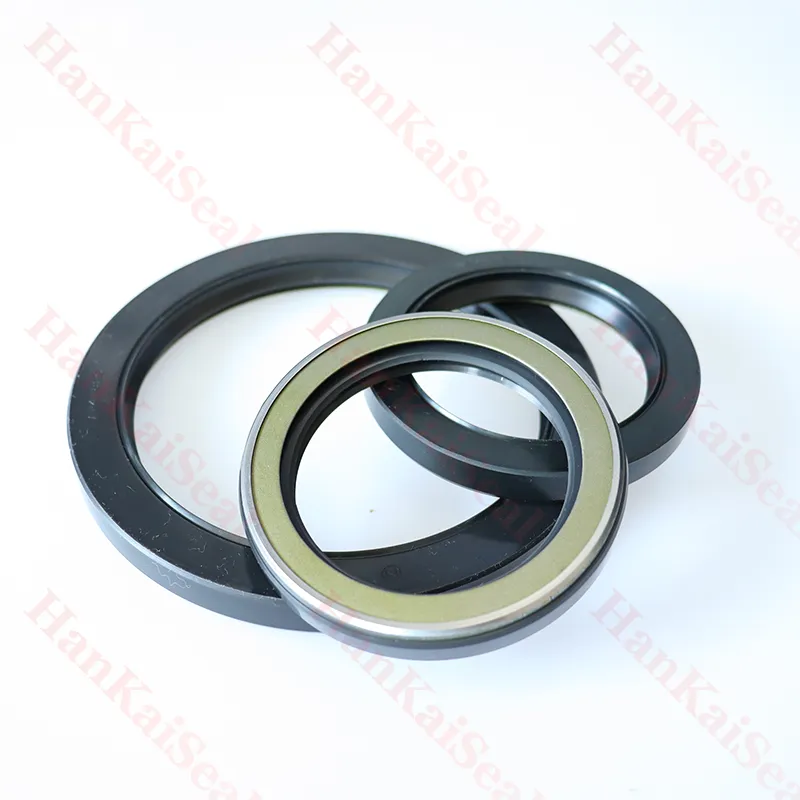اکتوبر . 22, 2024 03:11 Back to list
cylinder gland seal
Understanding Cylinder Gland Seals An Essential Component in Hydraulic Systems
Cylinder gland seals play a crucial role in hydraulic systems, providing the necessary sealing solutions for various applications in machinery and equipment. These seals are designed to prevent the leakage of hydraulic fluids from the cylinder while ensuring that the pressure inside the cylinder is maintained effectively. This article explores the significance, types, and maintenance of cylinder gland seals.
Importance of Cylinder Gland Seals
In hydraulic systems, cylinder gland seals are essential for enhancing the efficiency of operations. They ensure that the hydraulic fluid remains contained within the cylinder, preventing loss of fluid that can lead to reduced performance and increased costs. Furthermore, effective sealing is critical for maintaining the pressure necessary for the hydraulic system to function optimally. Any leak in the system can result in decreased power, inefficient operation, and unacceptable environmental impacts.
Types of Cylinder Gland Seals
There are several types of cylinder gland seals, each designed to suit specific applications and conditions. The most common materials used include nitrile rubber, polyurethane, and PTFE (Teflon). Nitrile rubber seals are often used due to their excellent resistance to oil and high resilience. Polyurethane seals, on the other hand, are preferred for their durability and flexibility, making them suitable for dynamic applications.
Some common types of cylinder seals include
cylinder gland seal

1. O-Rings These are simple, circular seals that provide effective sealing by being compressed between two surfaces. They are widely used due to their ease of installation and reliability.
2. U-Cups Resembling a “U” shape, these seals are designed to handle the pressure in one direction, making them ideal for single-acting cylinders.
3. V-Rings These seals are used to protect against dirt and dust while providing a seal against oil. They are often employed in combination with other sealing solutions to provide comprehensive protection.
Maintenance and Replacement
Regular maintenance of cylinder gland seals is vital to ensure their longevity and effectiveness. Operators should routinely inspect seals for signs of wear, damage, or leakage. Proper lubrication can also extend the life of the seals by reducing friction and wear.
When replacement is necessary, it is crucial to select the right seal type and material that corresponds to the specific requirements of the hydraulic system. Implementing a systematic maintenance schedule can help prevent unexpected failures and downtime, ultimately leading to improved productivity.
In conclusion, cylinder gland seals are indispensable components of hydraulic systems, ensuring the reliable operation and efficiency of machinery. By understanding their importance, types, and maintenance, operators can enhance the performance and lifespan of their hydraulic systems, leading to significant operational benefits.
-
TCN Oil Seal Metal Ring Reinforcement for Heavy Machinery
NewsJul.25,2025
-
Rotary Lip Seal Spring-Loaded Design for High-Speed Applications
NewsJul.25,2025
-
Hydraulic Cylinder Seals Polyurethane Material for High-Impact Jobs
NewsJul.25,2025
-
High Pressure Oil Seal Polyurethane Coating Wear Resistance
NewsJul.25,2025
-
Dust Proof Seal Double Lip Design for Construction Equipment
NewsJul.25,2025
-
Hub Seal Polyurethane Wear Resistance in Agricultural Vehicles
NewsJul.25,2025
-
The Trans-formative Journey of Wheel Hub Oil Seals
NewsJun.06,2025
Products categories
















